
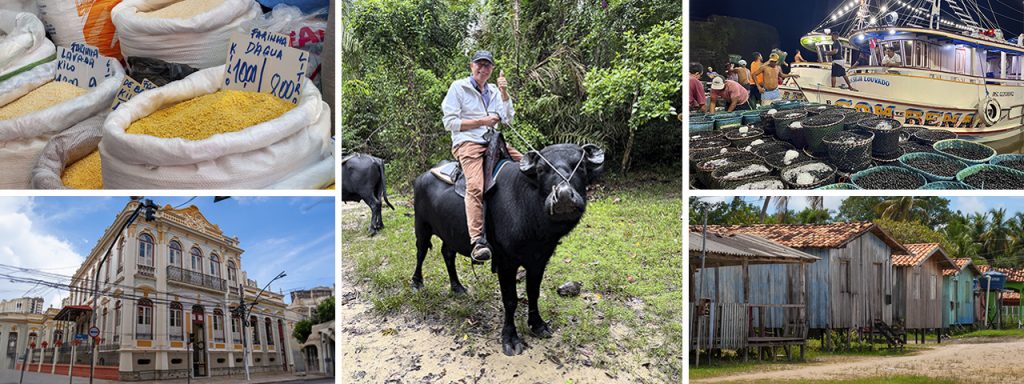
Dear partners,
Well, we are continuing on our journey through Pará, but first, a brief recap of the first leg of the trip, which you received in September. We started off from the small, quiet town of Alter do Chão, with its beach that was voted the most beautiful freshwater beach in Brazil. We then visited the Tapajós National Forest and the Jarí Channel.
Day 4 – Belém – A Feira do Açaí
On day 4 of our trip we’re in the city of Belém, the state capital of Pará, a city founded by the Portuguese in 1616 with the aim of defending the entrance to the Amazon against the French. This hot, humid, equatorial city (it lies just one degree south of the equator) is bounded by the Guamá River and the Guajará Bay and is considered the gateway to the Amazon region. It is a city with an impressive architectural inheritance that goes back to early colonial times, but also includes the years of the empire, and the belle époque of the latter part of the nineteenth century, a period in which the wealth generated by the rubber boom, led the city to dispute, along with Manaus, the title of “Paris of the Tropics”.
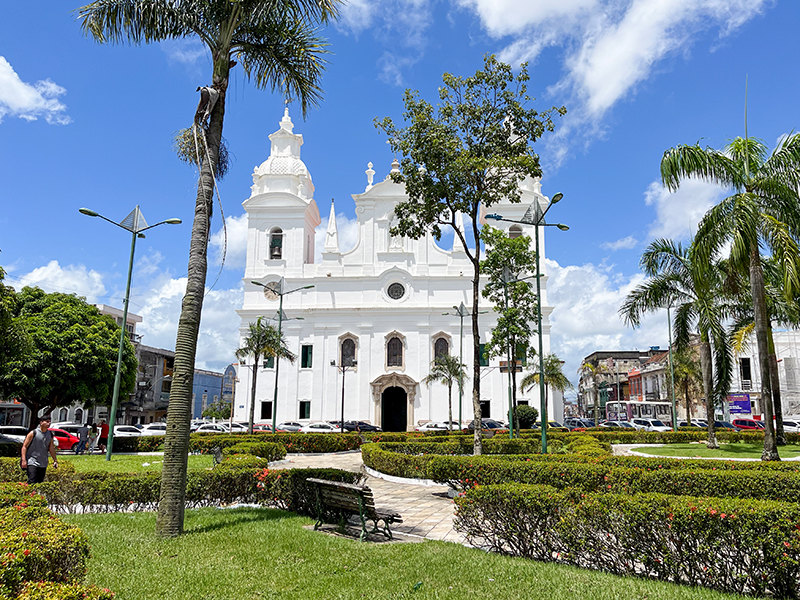
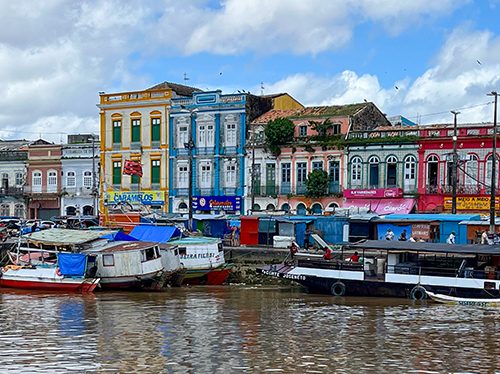
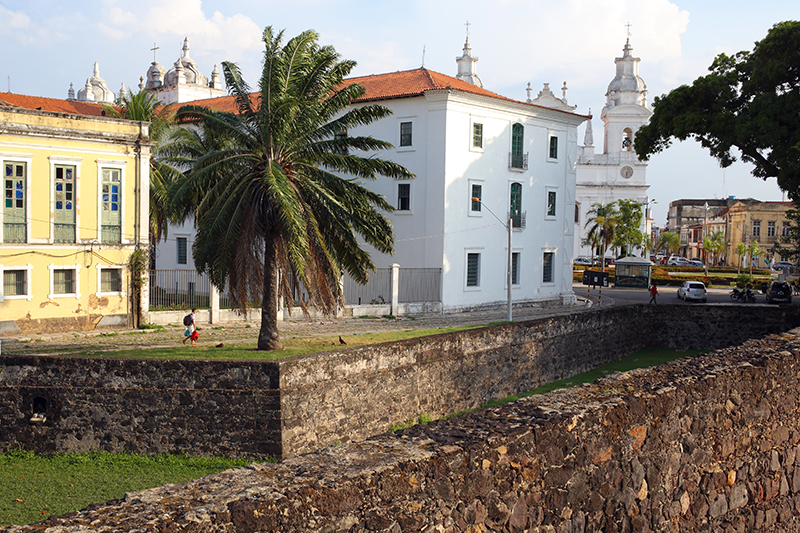
The city owes its prosperity to its port; indeed, the port is the principal point for exporting the region’s agricultural production. There is no better place to get a glimpse of the immense natural wealth of the Amazon region than at the port of Belem. For this reason, the first item on our agenda is an early morning visit to the feira do açaí (the açaí market). Açaí is a small, black or green, berry-like fruit which is a staple food throughout the Amazon delta and can also be found in cosmetics, moisturisers and soaps. Pará accounts for approximately 85% of Brazil’s production of the fruit and Belém is at the centre of the trade. This is clearly demonstrated at the early morning market where enormous quantities of açaí are traded. Arriving there at 4:30 a.m. the market is already a hive of activity with porters carrying large, handmade, wicker-like baskets of açaí, stacked up to three high, on their heads, as they hurry to unload the boats. The neatly arranged baskets, in rows, upon rows, (upon rows!), laid out in the market is a visible testament to the Amazon’s natural abundance. Leaving behind the açaí market we wander through the fish market, where a huge number of boxes of freshwater fish, including piraíba, tambaqui and golden dorado are being landed and readied for sale. Gradually, the bustle and din of the riverside market awakens a new day and we head back to the hotel for breakfast.
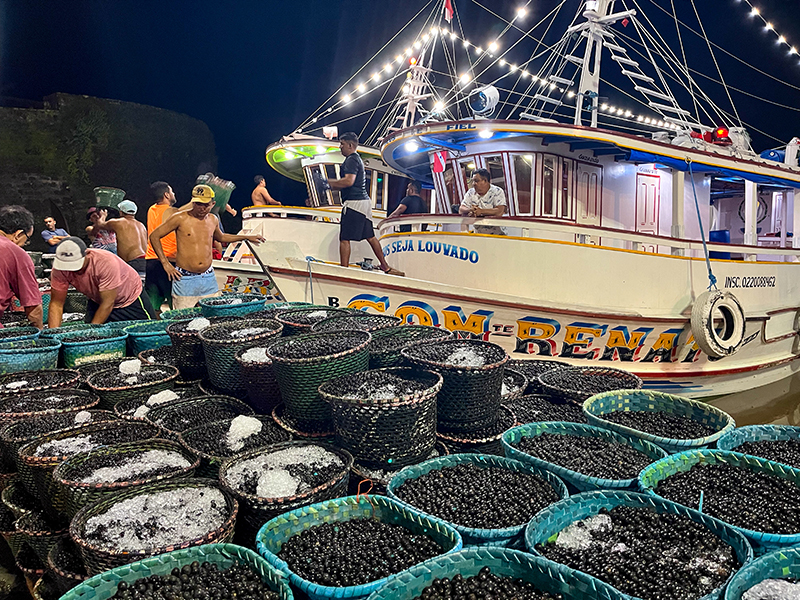

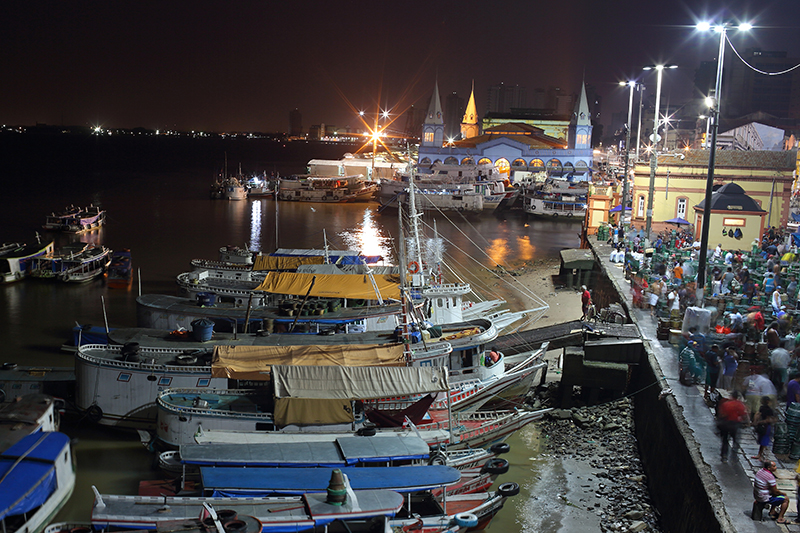
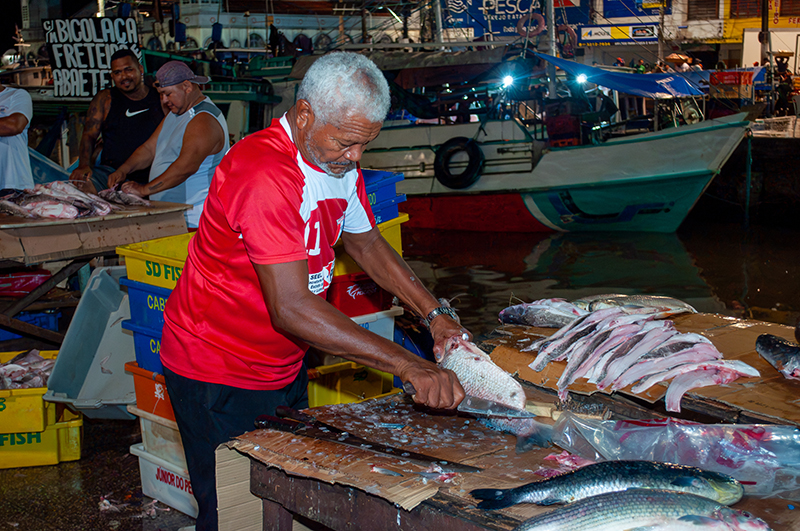
Following breakfast we take a walking tour of the city. The tour starts at the Ver-o-Peso market, and we are fortunate as our guide knows all of the market vendors, so, as well as surveying the fabulous array of local produce, we also receive fascinating details about how the local population uses the leaves from the cassava plant and the tucupi juice extracted from its root, in spite of the plant being naturally rich in cyanide! He also organises a tasting of local fruit juices (such as nance, bacuri, uxi, hog plum, cupuaçu) for us which was greatly appreciated. Following the Ver-o-Peso market, the tour goes onto the Meat Market, the Iron Market, Clock Square, which is home to a huge clock manufactured in England in 1930, the Dom Pedro II Square, the museums in the Lauro Sodré and Antônio Lemos Palaces, the memorial stone marking the meridian of the Treaty of Tordesillas, the Metropolitan Cathedral, the Presépio Fort and the Palace of the Eleven Windows. At the end of the tour we were dropped off at the Docks Station (Estação das Docas) for lunch. The tour lasts four hours, however, for those who want to see more of the city (and there really is plenty to see!) there is a six-hour tour which takes in the beautiful, neoclassical Theatro da Paz and some of the palaces from the time of the city’s rubber boom.
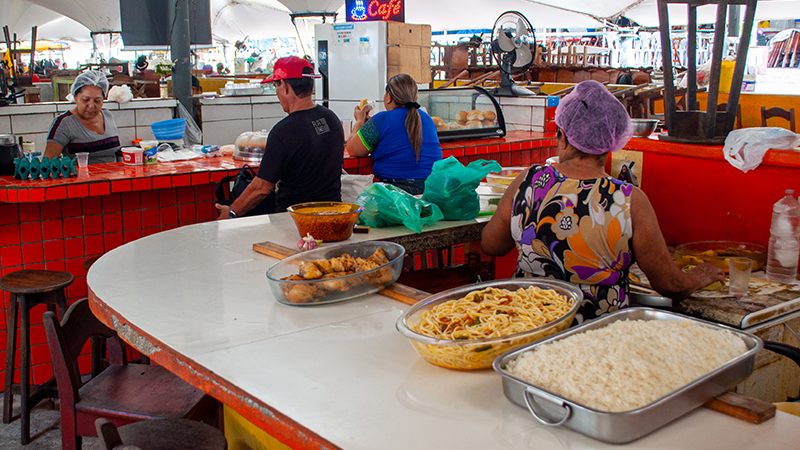
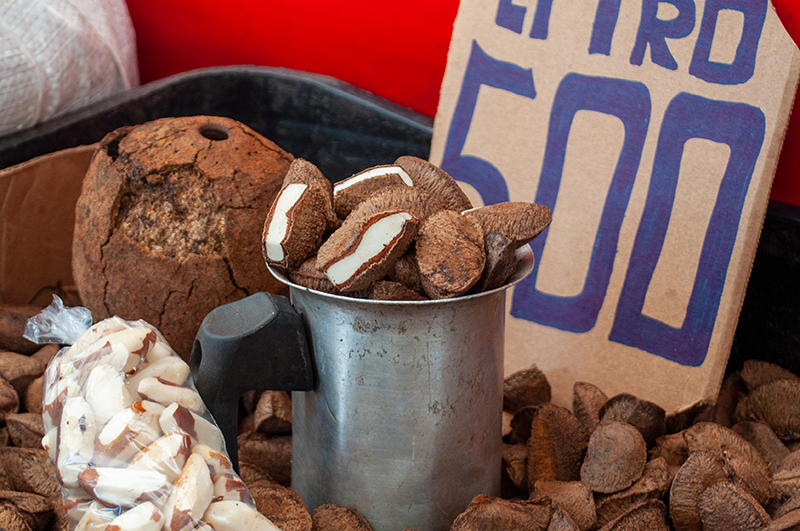
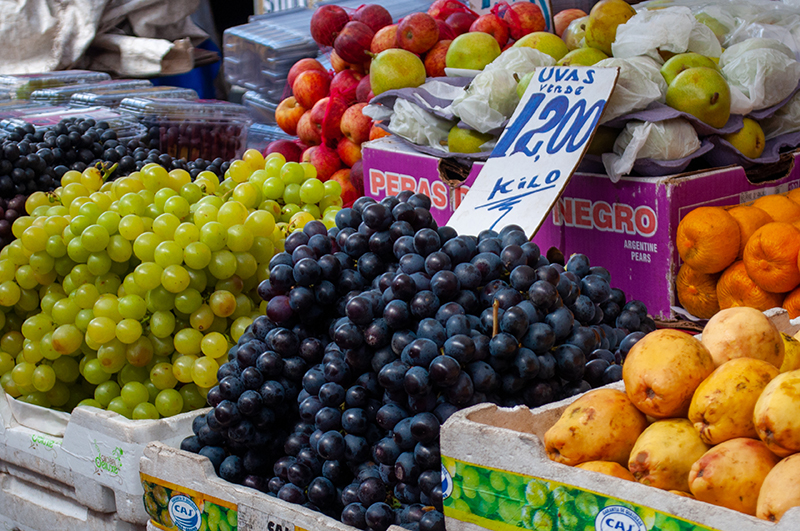
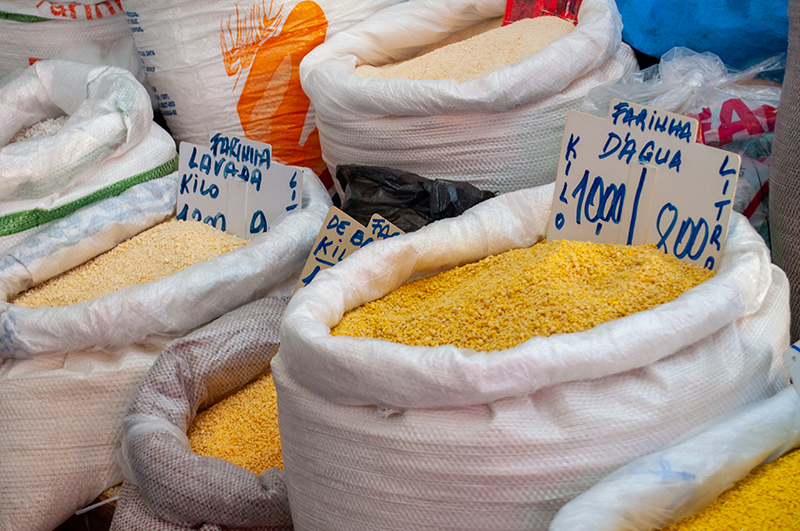
Day 5 – Belem – Parrot’s Island (Ilha dos Papagaios)
Our second day in Belém, also starts early, setting off, in a speedboat, at just after 4 a.m., for the short journey to the island. As the first rays of sunlight appear, the silence of the night is broken by the cries of a small number of birds which are gradually joined by others, until the dawn sky is filled with countless birds performing a beautifully choreographed, matinal dance, high above. The birds finally depart in search of their daily sustenance but this truly magnificent visual and sound display is definitely a well-earned reward for having got out of bed so early! The tour also takes in the creeks and riverine environments around the island before heading back to Belém for breakfast . Please note this tour only takes place between January and August.
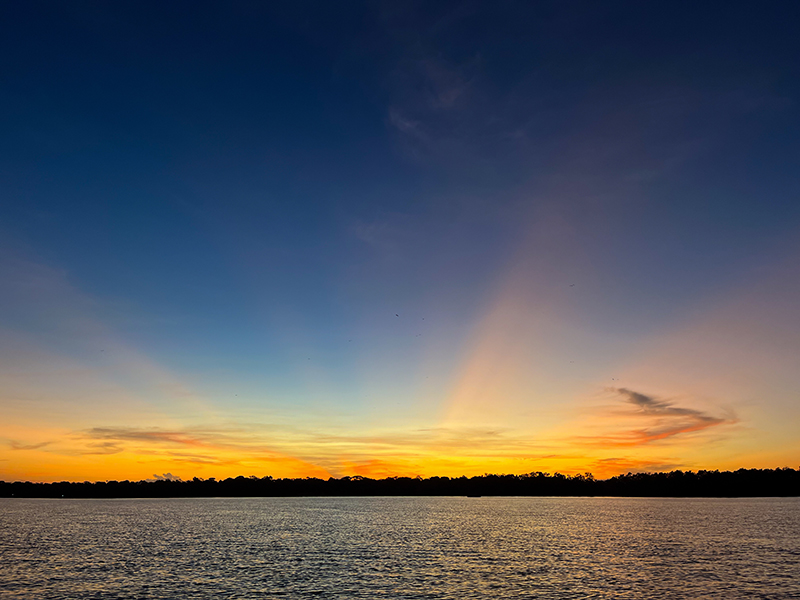

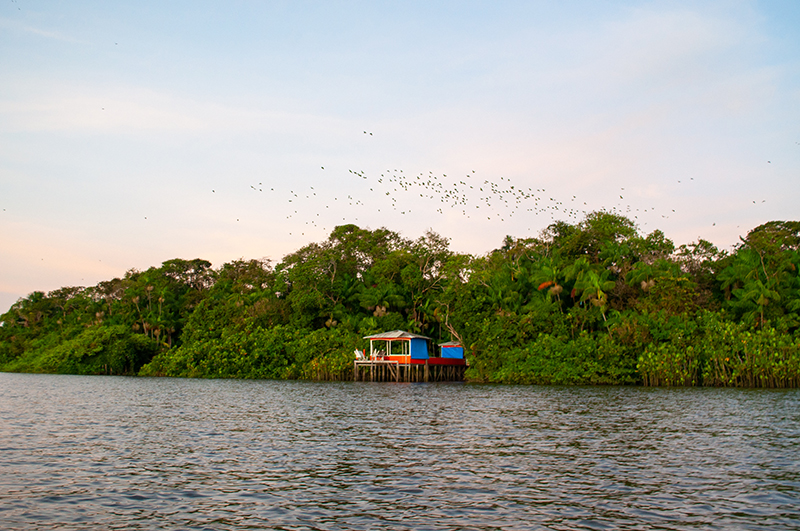
Having started the day early, we allow ourselves a short rest before heading out again, for our next visit which is to the remarkable Theatro da Paz. The theatre’s beautiful neoclassical façade, its perfect acoustics and seating for over 1,100 spectators, together with mosaic flooring, crystal chandeliers, ornate, gilded, decoration and fresco-covered ceiling are a testament to the city’s wealth at the height of the rubber boom, in 1878, when it was inaugurated. A brief guided tour provided us with a historical introduction to one of the city’s principal architectural landmarks and a deeper understanding of the cultural context of the city. Definitely, not to be missed when visiting Belem!
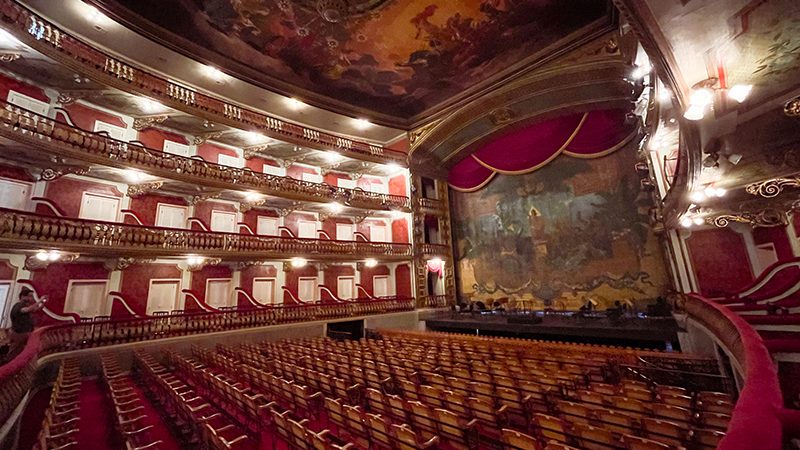
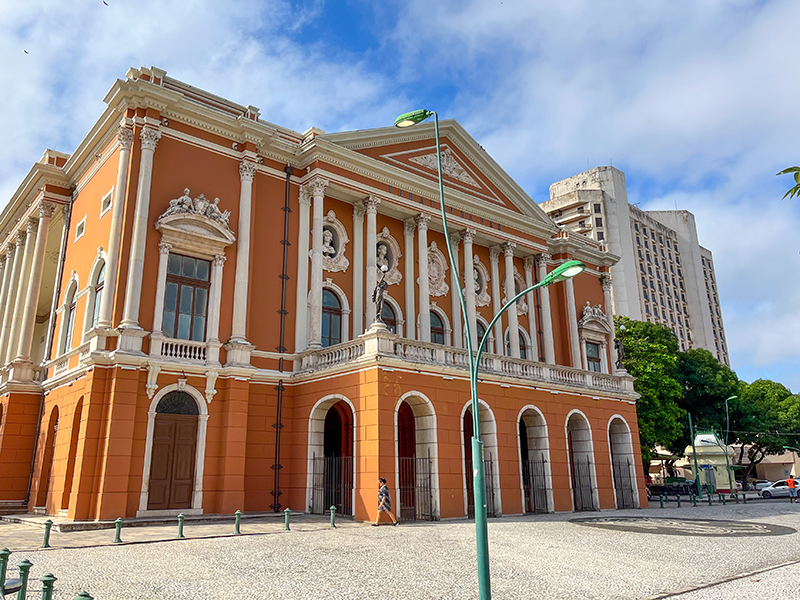
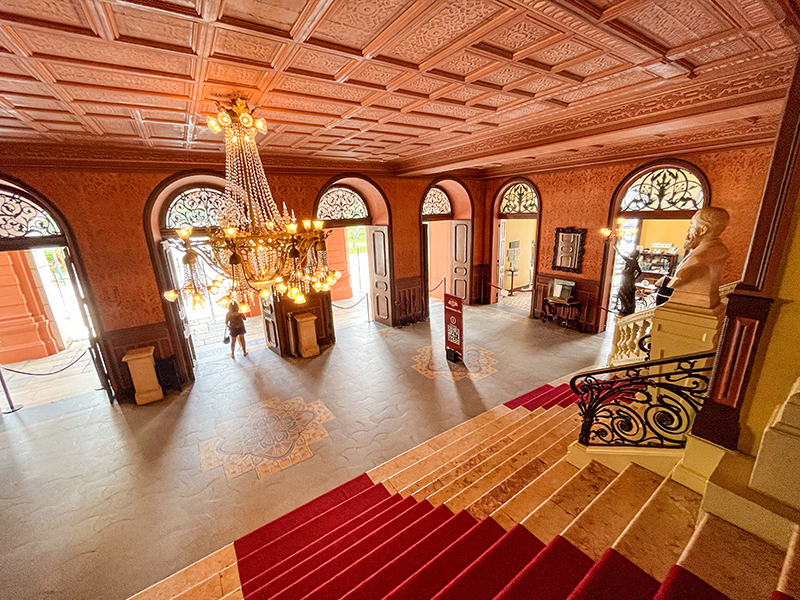
Next up, for something completely different, we visit the Paraense Emílio Goeldi Museum which is a federally-funded research institute that carries out research into the Amazon region as well as being the home of important botanical and zoological collections. The museum also consists of an attractive botanical garden and a small zoo. It is named in honour of the Swiss naturalist Émil August Goeldi, who was director of the institute at the end the nineteenth/beginning of the twentieth century. It has a huge variety of plants and trees and recently it inaugurated a pavilion which provides interactive presentations about the Amazon Basin. On a hot day in Belem the garden provides much welcome shade from the sun as well as the chance to take some great photographs of the natural world.
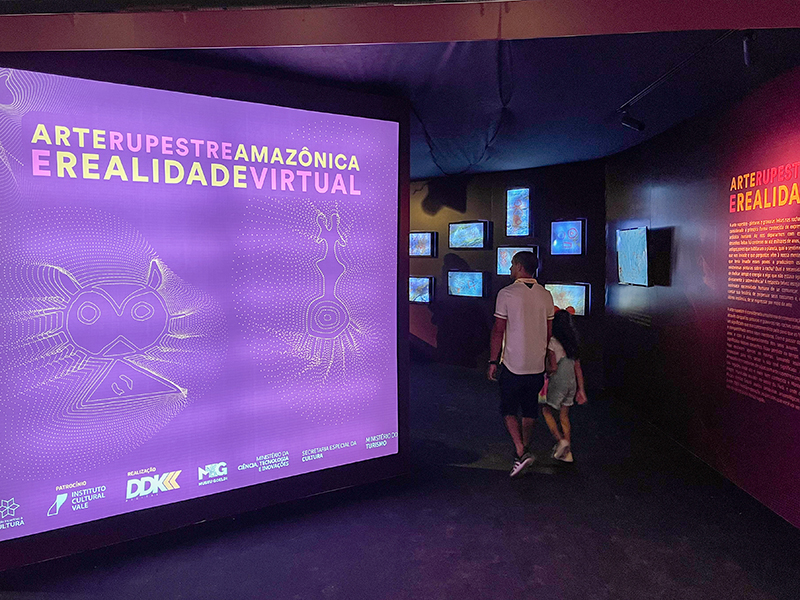
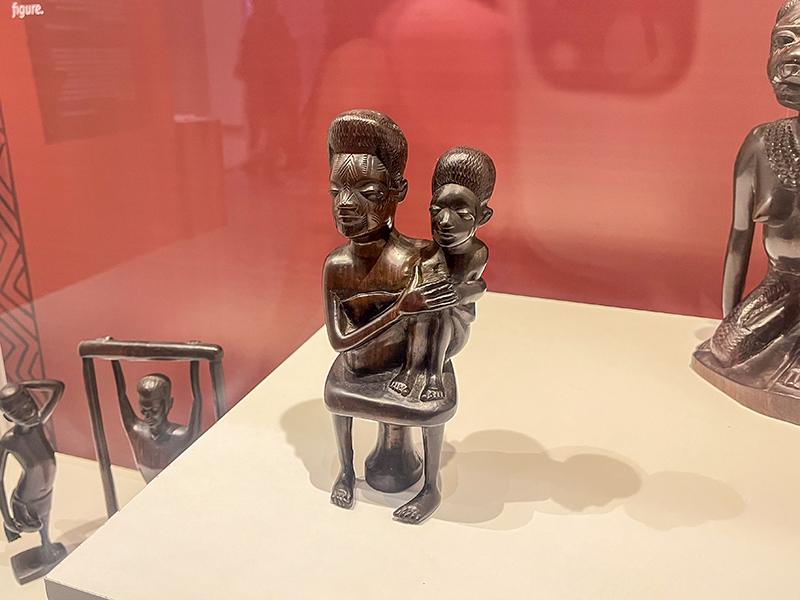
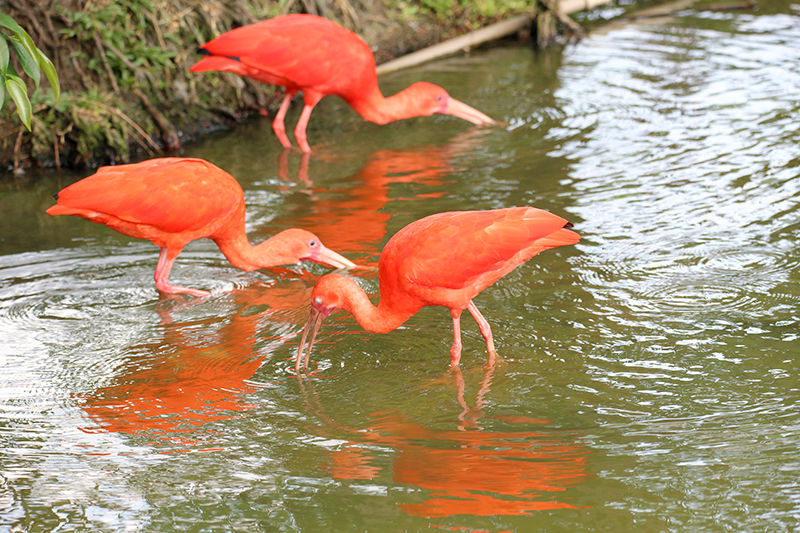
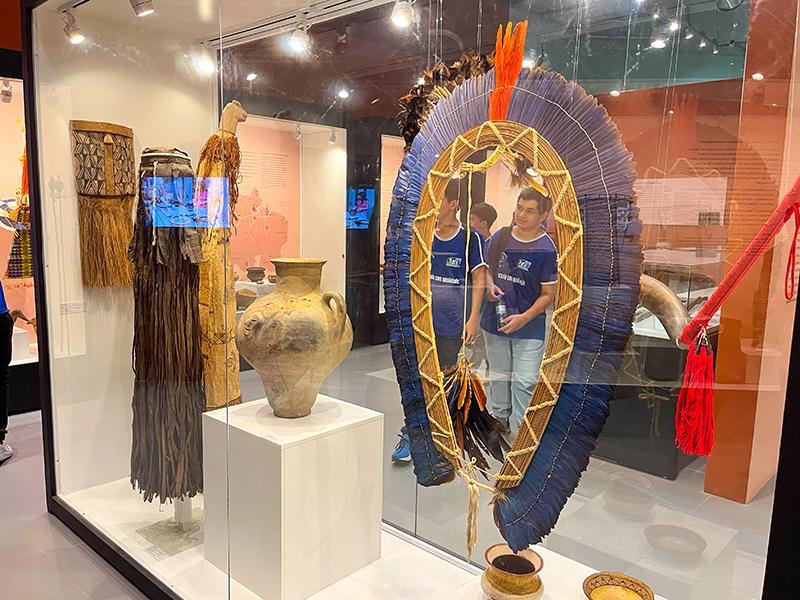
Day 6 – Marajó
After checking-out form our hotel we head back to the port, this time, to take the highspeed ferry service and, following a journey of a little under two hours, we arrive in Marajó. This is the largest island within the Marajó Archipelago, which, is the largest fluvial-maritime archipelago on Earth, consisting of approximately 2,500 islands. The largest island has an area of 40,100 square kilometres, making it almost the size of the Netherlands. The archipelago is home to almost 600,000 inhabitants and the local economy is based on fishing, açai and bacurí plantations and the rearing of buffalo for meat, milk and cheese. It is estimated that there are more than 700,000 buffalo on the island, both tame and wild. The island is also home to some beautiful beaches which attract visitors but the island is surprisingly underexplored as a tourist destination. One of the most striking features are the mangroves which can be found around the island and which are home to rich and diverse ecosystems.
We arrived in Soure, the main town on the island and the gateway for visitors wishing to explore the region. The town has a peaceful and charming atmosphere, with quiet, tree-lined streets, colonial houses and a pleasant central square.
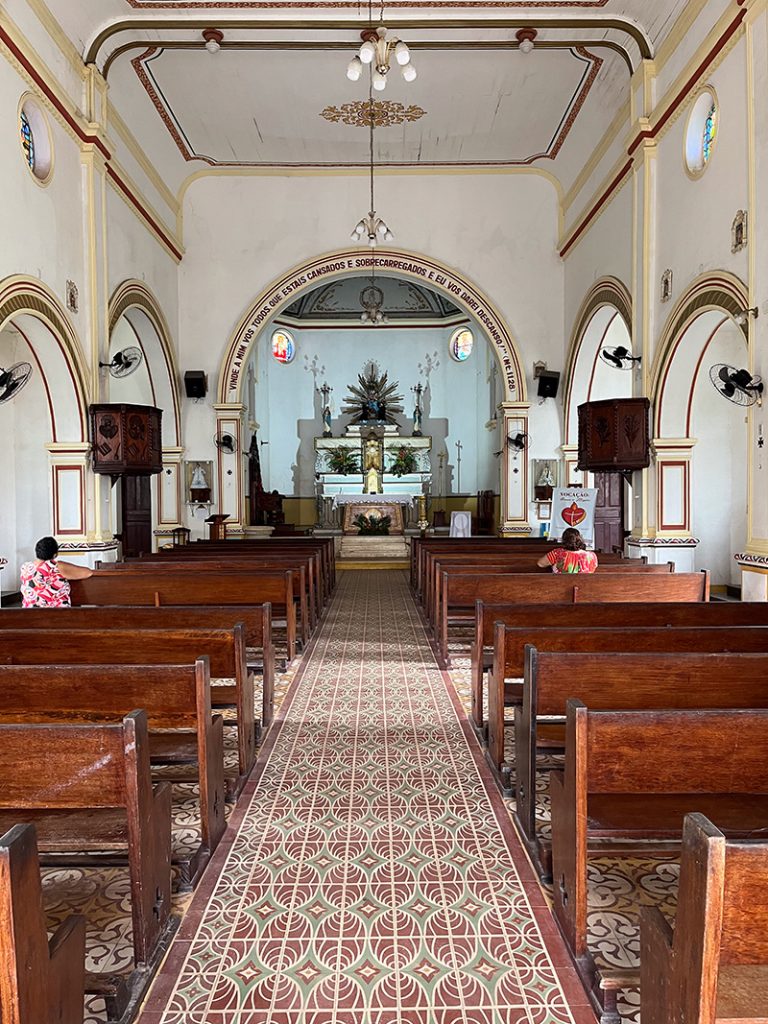
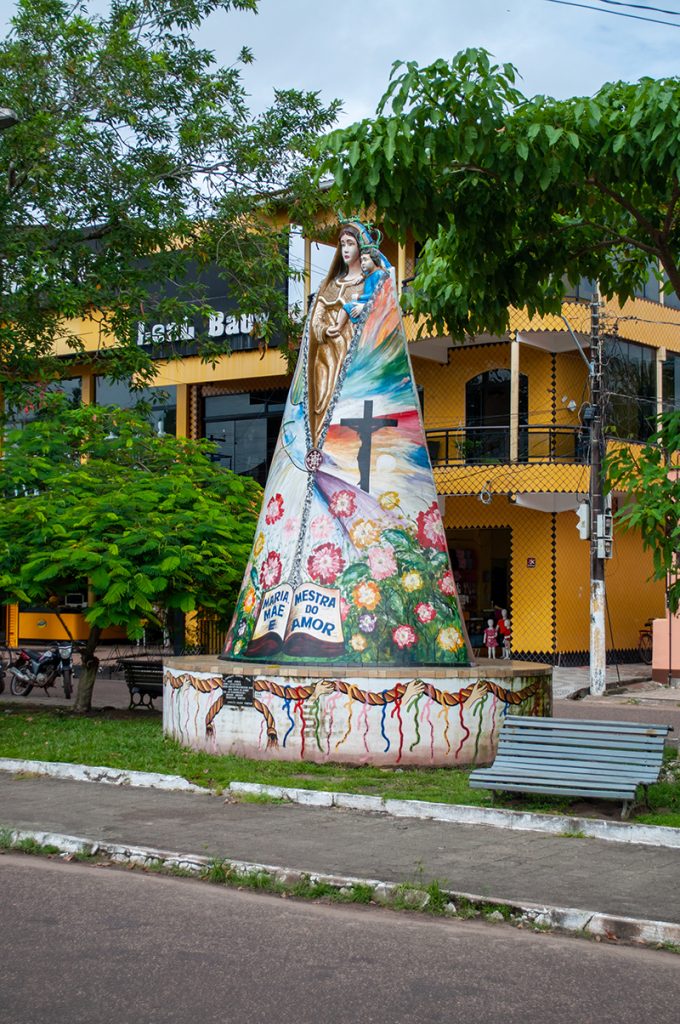
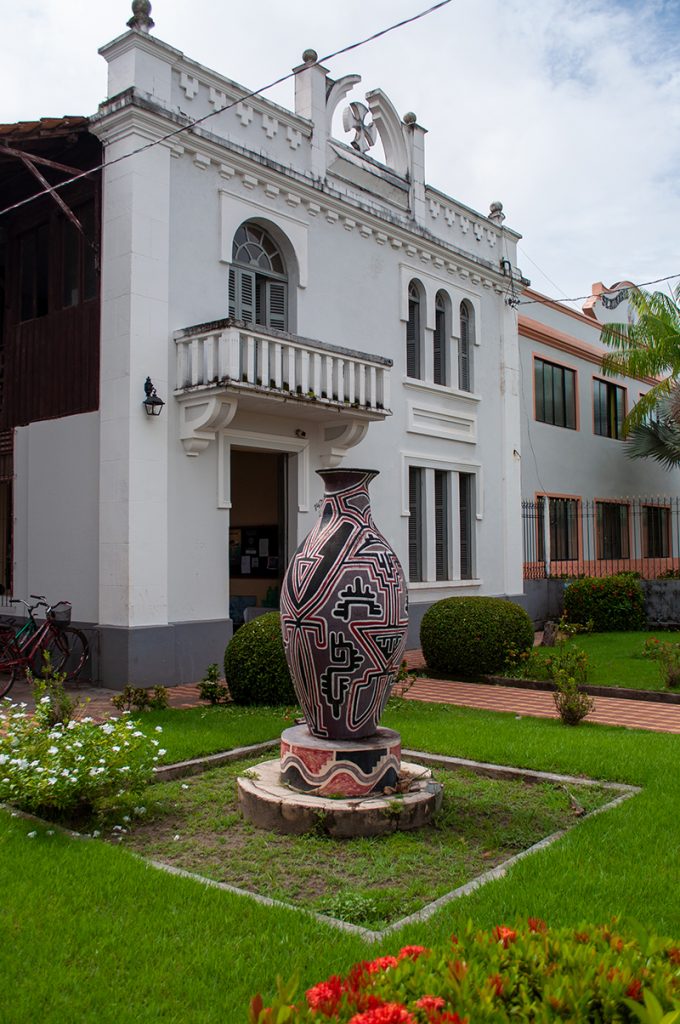
The first thing to get used to are the number of buffalo wandering around the place, even in the town itself, which should come as no surprise given the significant role the buffalo plays in the region’s culture and economy.
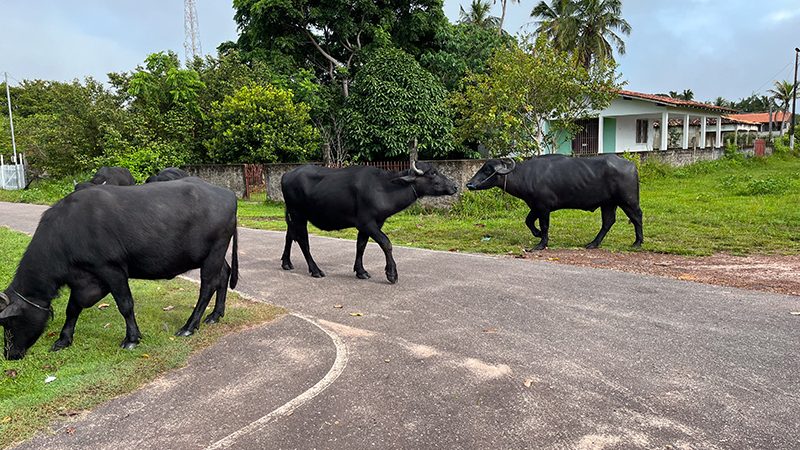
Day 7 – First full day
This full day for exploring Marajó starts with a short 10-minute drive to the Fazenda São Jerônimo, where the owner receives guests and guides them on a tour of his farm, which includes a forest trail, a boat trip (please note that the boat trip depends upon the tide) and a trail along a suspended walkway to explore the mangroves. This is the ideal way to penetrate, observe, record and enjoy these unique estuarine habitats, where the waters of the Amazon and Pará rivers met the tidal waters of the Atlantic Ocean. For the most daring, the tour also includes a swim and / or a ride with the buffalo! The tour lasts approximately two and a half hours in all. After the morning’s exhilarations and explorations we stop and enjoy a leisurely lunch.
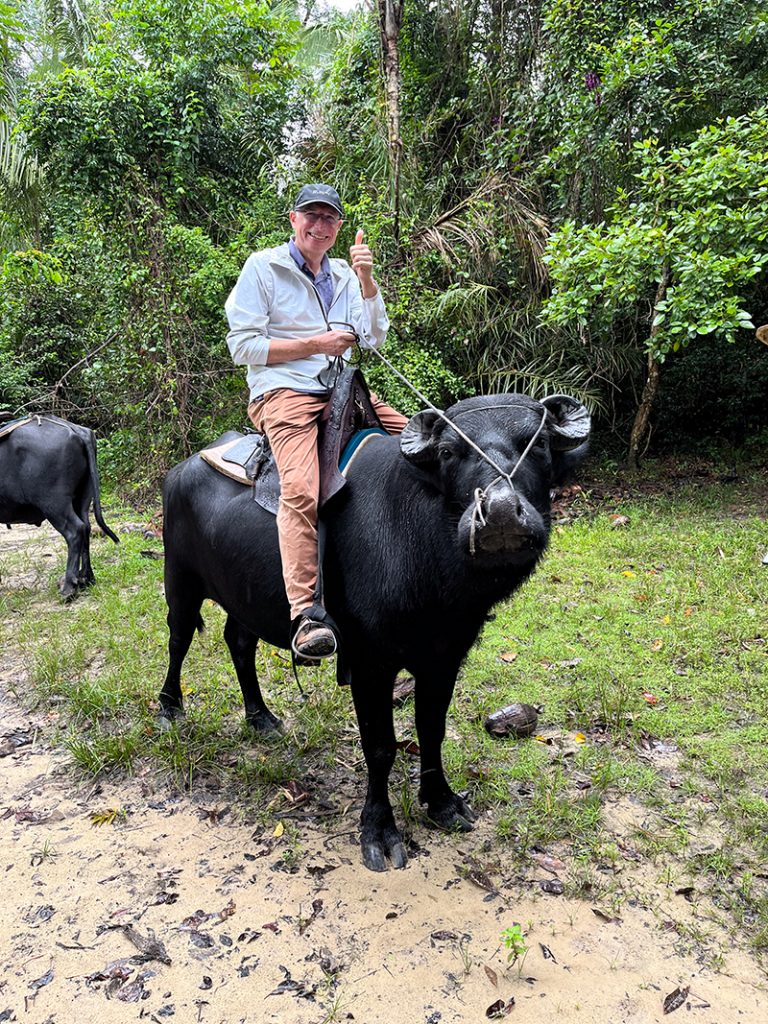
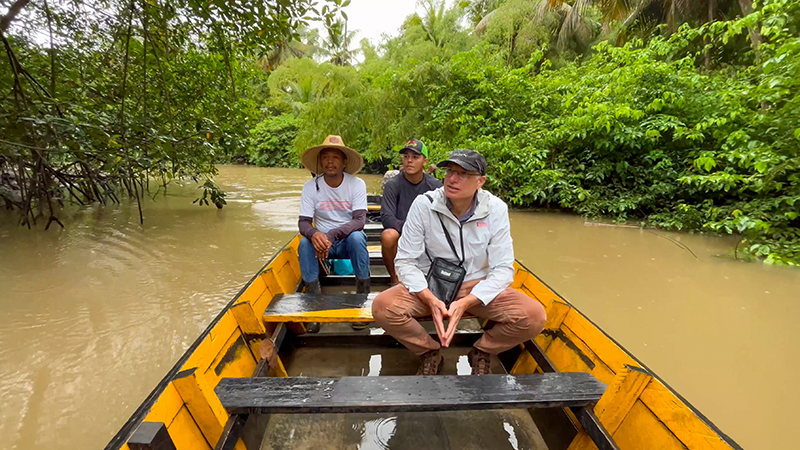
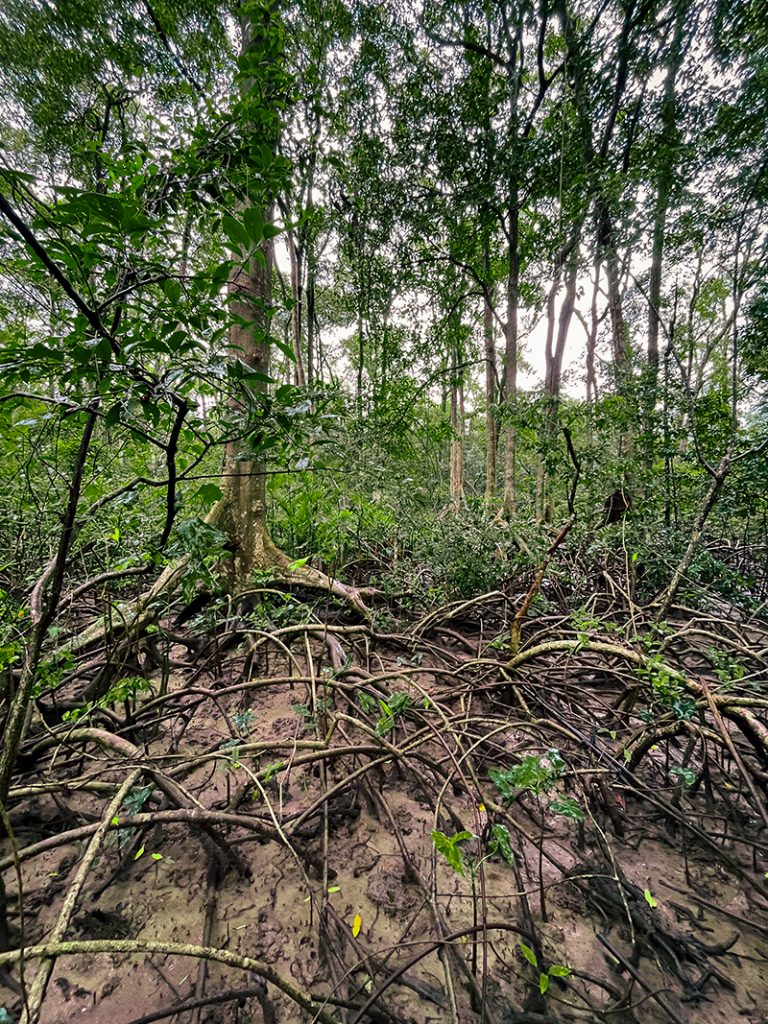
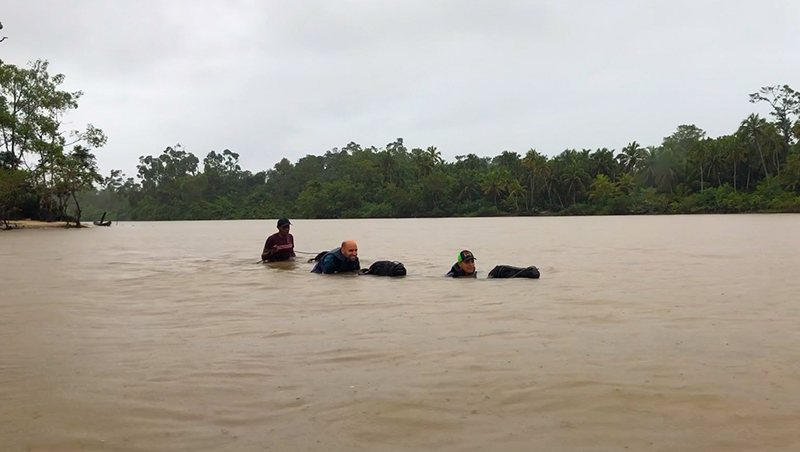

The afternoon’s programme takes us to the nearby Fazenda Mironga which is a small buffalo-rearing farm that uses environmentally-friendly technologies which don’t harm the mangroves. Arriving at the farm we receive a very warm welcome, and, under the shade of a cinnamon tree, one of the members of the family, that owns the farm, explains its workings and the benefits which buffaloes bring to the island’s inhabitants. Following the talk, we are invited to explore the farm and taste the delicious, locally-produced, award-winning, buffalo cheese, as well as, milk, butter and buffalo meat. A master in the art of preparing tapioca (a typical dish in the north and north-east of Brazil, made from a starch, extracted from the cassava plant and heated like a pancake) is on hand to prepare delicious tapiocas tailored to each visitor’s tastes.
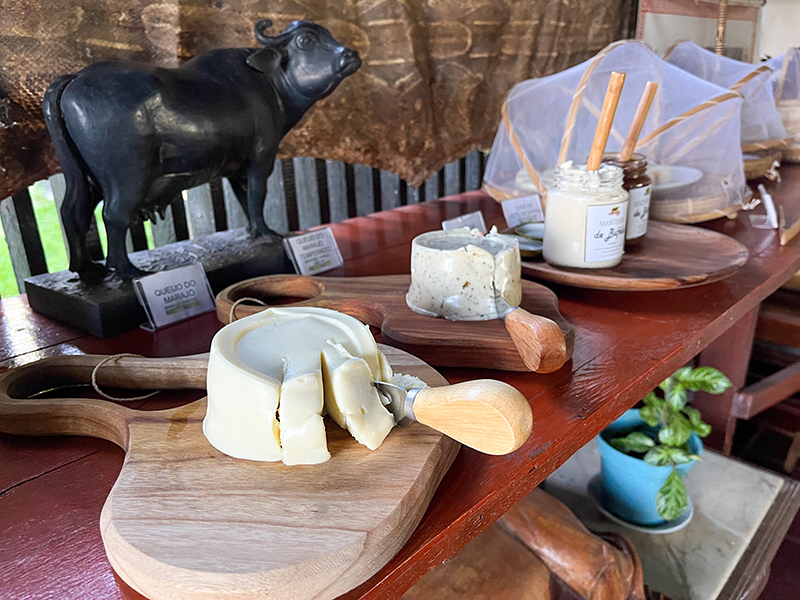


Day 8 – Second full day
On our second day in Marajó, we decide to visit the Caruanas Institute of Culture and Ecology which is set, amidst the forest, on the banks of the Paracauari River. It is made up of a number of simple buildings, laid out in the format of an indigenous village and in total harmony with the natural surroundings. The institute is run by a Zeneida Lima, writer, leader and spiritual healer from the local indigenous peoples. The institute aims to preserve and conserve nature through an educational programme for local children which applies local knowledge and practices. Another fascinating aspect of the visit is that the institute displays various indigenous works of art, as well as, pottery, so it is a chance to see some amazing sculptures, statues, urns, pots, bowls and vases.
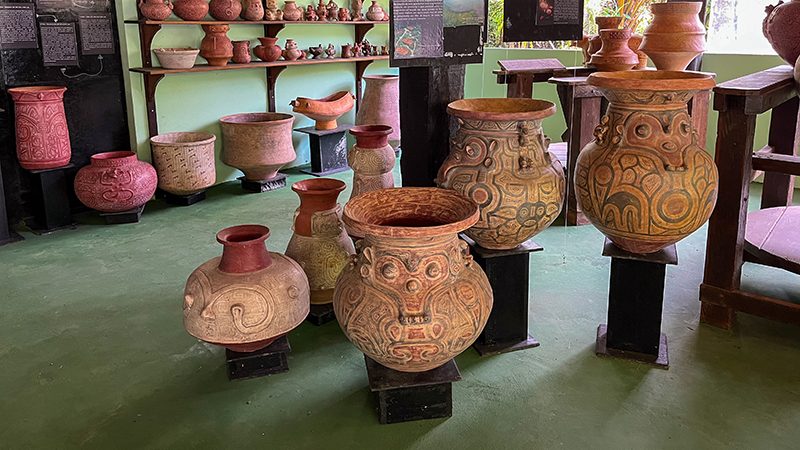
Concluding our visit we take another short trip, this time to the Fazenda Bom Jesus. This is the place to go for a truly immersive experience of the island’s rich fauna and flora and it has been designated an environmental protection zone by IBAMA (Brazil’s Federal Environmental Protection Agency).
One of the owners, Dona Eva, is a veterinarian with a real passion for environmental conservation and she expresses this passion through her work in rescuing rare species of birds, turtles and other animals and then releasing them into the protected environment.
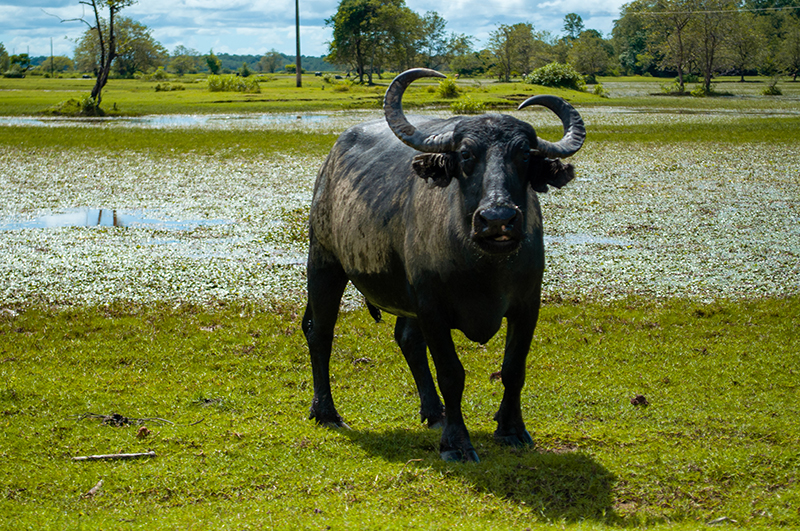
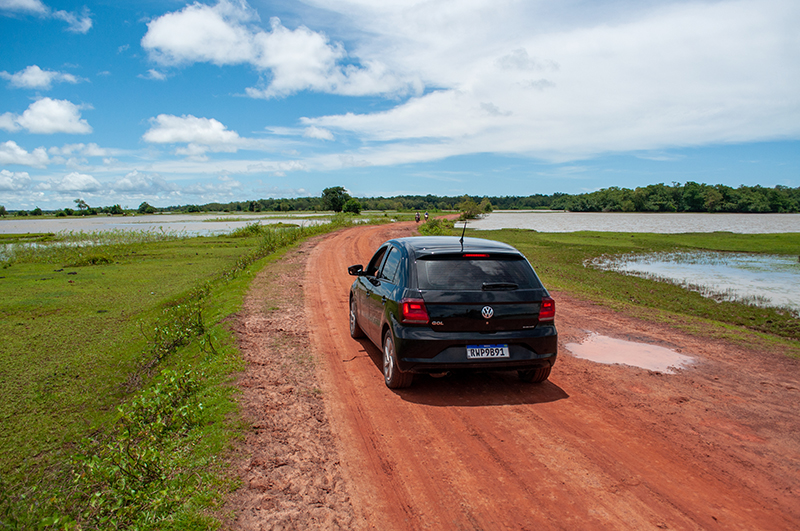
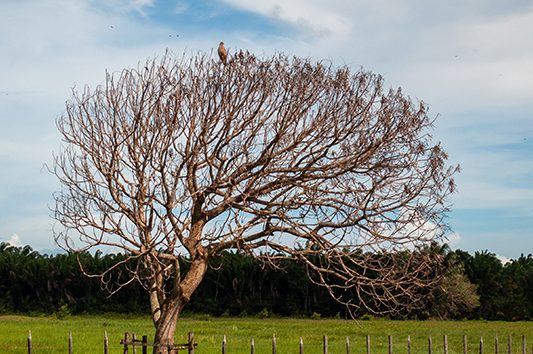
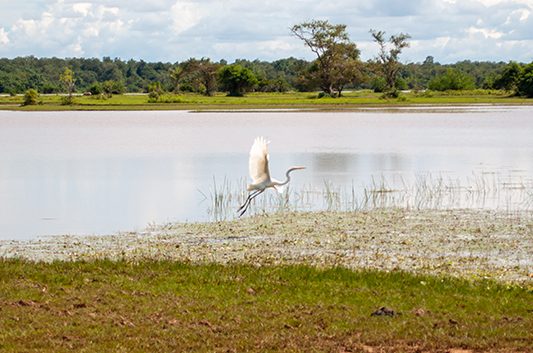
One of the attractions of Fazenda Bom Jesus is that it is on the way to Comunidade do Céu (“Community of Heaven”) which is a charming fishing village, consisting of brightly painted wooden houses, raised on stilts, located on the Baía de Marajó. The path to get there is the perfect short safari and all along it, visitors can marvel at the lakes, streams and exuberant local vegetation, with the chance to see great blue herons, scarlet ibis, caimans, buffalo, horses and other wildlife. Arriving at Comunidade do Céu we stop to have lunch on the beach, where we relax, gazing out over the vast expanse of sand, between us and the waters of the Baía de Marajó and the Atlantic Ocean.
Day 9 – Back to Belem and Homeward Bound
As the highspeed ferry heads upstream, back to Belem, we reflect on this unforgettable odyssey through the state of Pará. The journey had made a deep impression on us; the warmth of the people, the distinctive cuisine, the aspects of indigenous culture that are present. From the breathtaking landscapes of Alter do Chão, to the vibrant culture of Belém, to our buffalo-riding adventures across Marajó; each day provided unique insights into the distinctive “Amazons” that can be found within “The Amazon”.
We feel immensely privileged to have explored and experienced Pará, so we invite you to visit our website for detailed information on prices and the package options available for these incredible destinations.
This is definitely an experience not to miss!